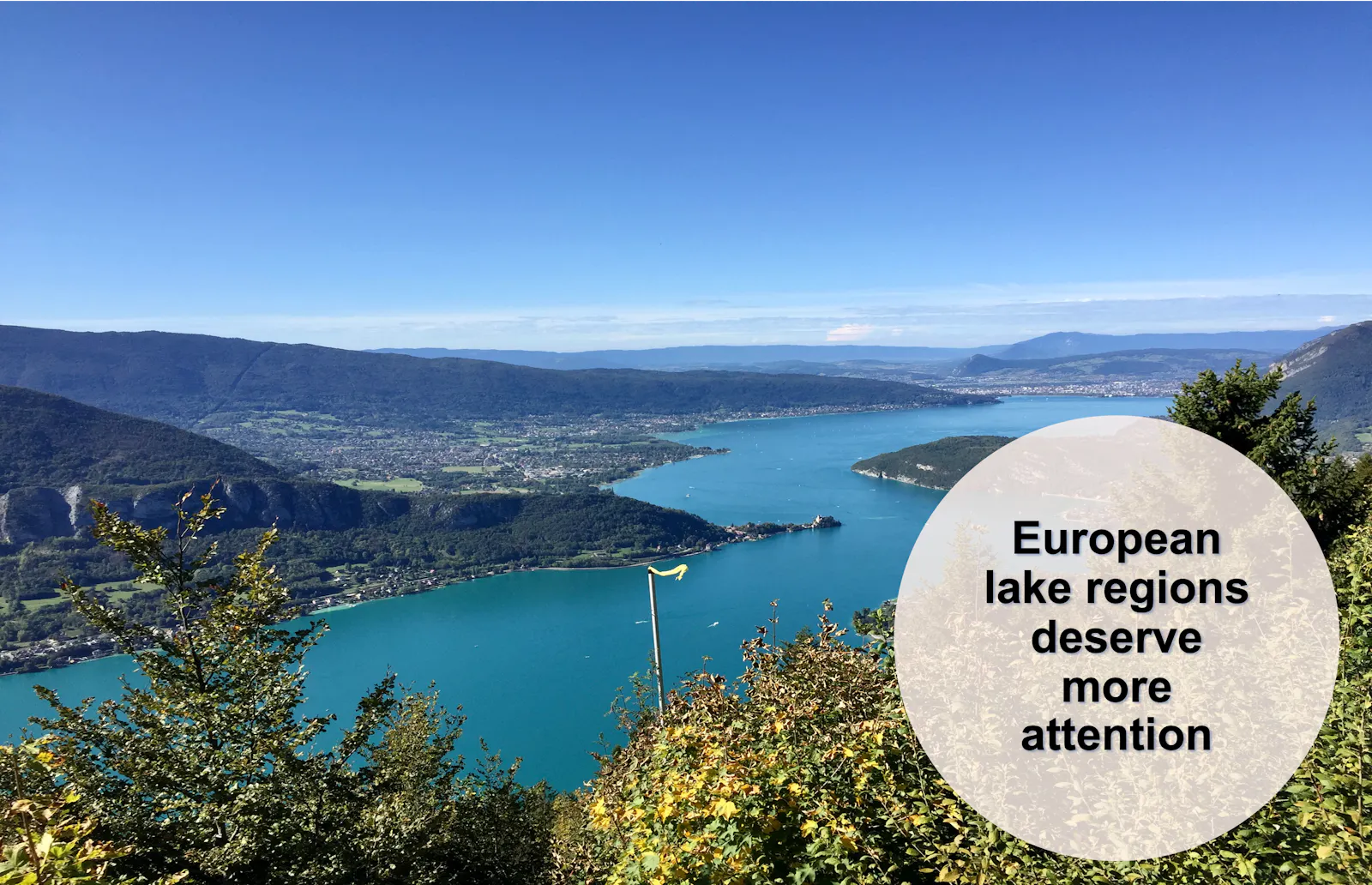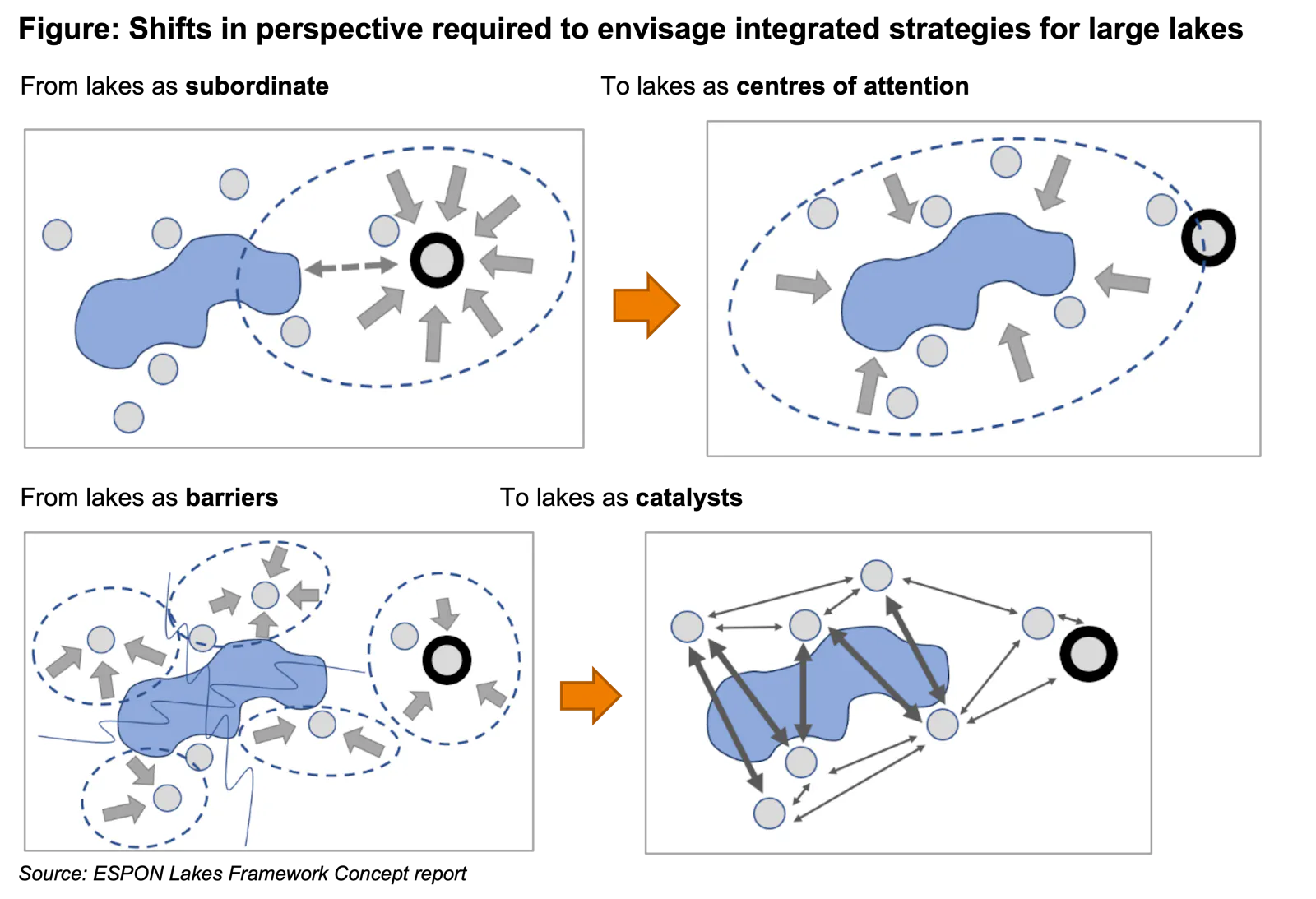European lake regions deserve more attention
December 2022

European regional policies have paid specific attention to mountain areas, coastal regions and islands. Large lake regions have received relatively less attention. The ESPON LAKES (Opens in a new window) project has analysed their specific challenged and opportunities, and provides recommendations on how policies could be tailored to these territories’ specific needs.
Large lakes can be found in different parts of Europe. The EU’s largest lake is lake Vänern in Sweden. Finland is said to be the “land of the thousand lakes”, the largest of which is Saimaa in the so-called Lakeland region. In and around the Alps, one finds renowned lakes such as Lake Geneva, Lake Constance, Lakes Maggiore and Lake Como. However, major lakes can also be found in other parts of Europe, e.g. Lake Peipus on the border between Estonia and Russia, Lake Balaton in Hungary, Lake Prespa on the border between Greece and Macedonia, Étang de Berre in France.
European large lakes are important water reservoirs, ecosystems, fishing and leisure areas. Lakes and lake shores are often attractive areas. Different functions compete for space.
This blogpost presents some key reflections inspired by results from the study. Large lakes are not identified based on any size threshold. The analysis focuses on all lakes considered large and significant enough to justify the elaboration of targeted regional development plans.
Why should one pay attention to large lake regions?
According to the EEAs 2021 Ecological status of surface water in Europe (Opens in a new window), only 56% of lakes have good or excellent ecological status. This is in spite of the fact that the European Water Framework Directive (Opens in a new window) required all European surface waters to reach good status by 2015. This deadline can be postponed under exceptional circumstances. A final deadline has been set to 2027 for all surface waters in Europe, i.e. five years from now. Achieving good ecological status in all lakes is therefore a major challenge.
Climate change has significant impacts on lakes. According to scenarios for the years to come, this may generate major risks. Changing rainfall regimes increase the risk of flooding (Opens in a new window) in large parts of Europe. At the same time, reduced water levels during periods of drought may have a negative impact on water provision,ecosystems, transport and tourism. Some major European lakes may dry out (Opens in a new window). Proactive public policies are needed to increase the resilience of lake regions in the face of uncertainties linked to climate change.
Lake regions are also prime example of the need for cross-sectoral cooperation to promote regional sustainable development. This can be illustrated by conflicting sectoral interests when seeking to regulate lake water levels. While operators of ferry services need constant high water levels, ecosystems are often better preserved by letting them vary according to natural cycles. Energy producers ideally wish to stock up water before winter months when electricity demand peaks. However, this may expose surrounding localities to flood risks. For agriculture, it is important to have access to water for irrigation during the vegetative season. The pursuit of balanced and sustainable development in lake regions therefore requires extensive dialogues to reach compromises between varied needs.
Most European lake regions either have a well-developed tourism and leisure industry, or have a potential for the development of tourism. Lake Constance and Lake Balaton offer examples of lakes with well-developed tourism and leisure activities. This high level of attractiveness may generate threats for sustainable development in and around the lake. Other lake regions are still largely invisible as tourist destinations in spite of their assets. The development of sustainable tourism in these areas requires coordination between relevant actors and extensive branding efforts. The ESPON LAKES projects has identified good practices in this regard, e.g. around Lake Vänern (Opens in a new window) close to Gothenburg, or Étang de Berre (Opens in a new window) close to Marseille.
Current cooperation initiatives in large lake regions
Large lake regions are confronted to administrative and territorial fragmentation. This is partly because regional or national borders run through most large lakes. Riparian municipalities do not necessarily share the same views on lake-related opportunities, challenges and risks. Furthermore, as described above, a wide range of sectoral actors depend on the lake for their activities and/or have an impact on the lake. Lake regions are therefore confronted to a combined challenge of inter-territorial and inter-sectoral coordination.
The ESPON LAKES project has reviewed more than 50 cooperation initiatives in 12 large lake regions. This review has covered lake-centred cooperation bodies and intermunicipal cooperation initiatives, which support the elaboration and implementation of integrated strategies. It confirms the importance of improved vertical cooperation between local and regional actors in policy fields such as water management and transport. Bottom-up cooperation initiatives such as community-led local development groups help to build more resilient communities and clusters of activity, e.g. in the fishery sector. Other cooperation initiatives also play a role in some lake regions, e.g. grassroot stakeholder alliances, networks of NGOs and business consortia.
In general, we observed that two shifts in perspective are required before the elaboration of integrated development strategies in lake regions can be envisaged (see Figure below). First, key stakeholders must be encouraged to consider the lake as the centre of attention for relevant issues, rather than as a subordinate concern. In other words, one needs to identify issues for which the lake region is the most relevant functional area, rather than systematically considering it as a periphery of the urban or metropolitan region.
Second, it is important to establish the idea that jointly addressing lake issues can be a catalyst that generates other benefits. For example, bringing together fishers and farmers to reflect on the impact of their activities on lake ecosystems can also help to develop strategies for more sustainable and profitable food production. Traditionally, many lakes have constituted barriers to trade and exchanges. One must therefore establish new habits of dialogue and cooperation.

Climate change makes it particularly important to pay more attention to its lakes and the competing economic, social and environmental interests on how to utilise their rich potential. This is a multi-level and cross-sectoral governance challenge, in which European, national, regional and local authorities have different roles to play. They can help set up inclusive governance frameworks for the joint and sustainable management of lake resources.
by Erik Gløersen
https://steadyhq.com/en/spatialforesight/posts/c25f4743-c7f2-436f-b94a-8afa4764f5a8 (Opens in a new window)

